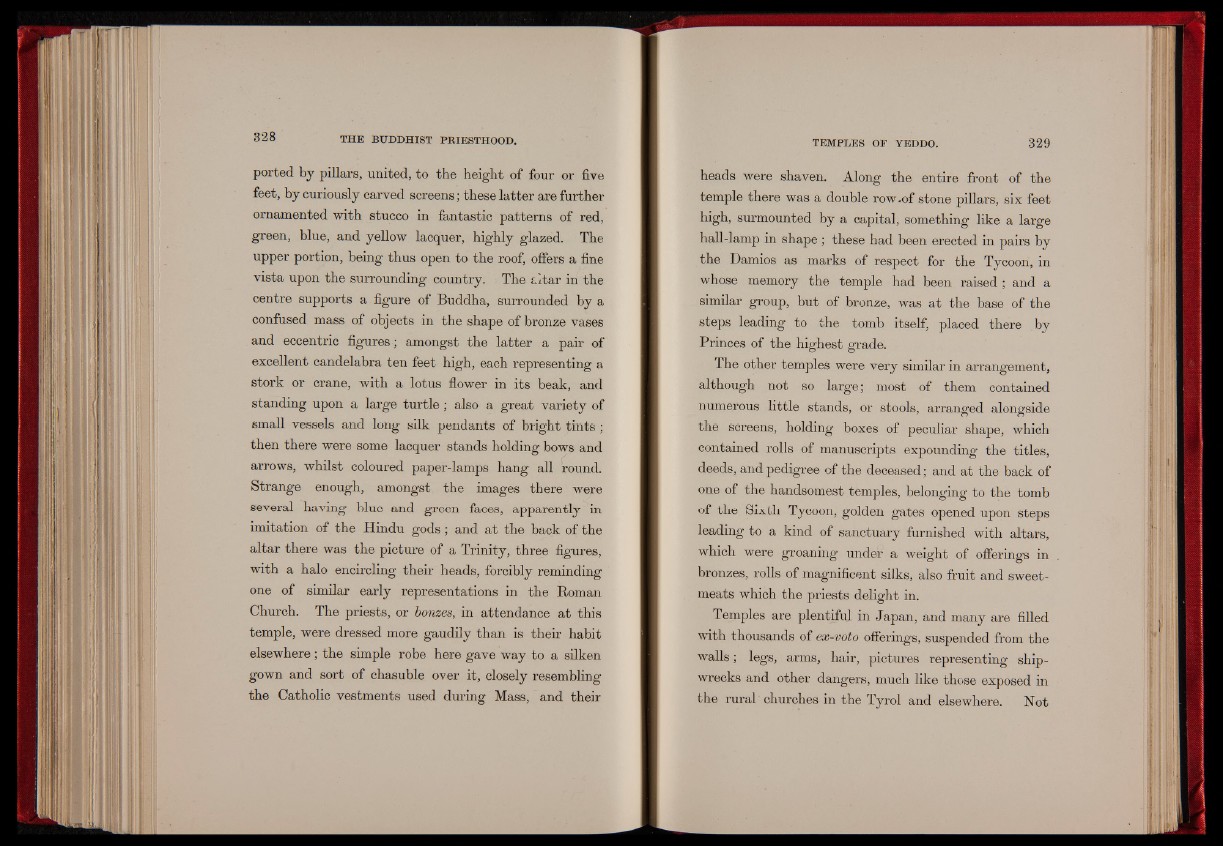
ported by pillars, united, to the height of four or five
feet, by curiously carved screens; these latter are further
ornamented with stucco in fantastic patterns of red,
green, blue, and yellow lacquer, highly glazed. The
upper portion, being thus open to the roof, offers a fine
vista upon the surrounding country. The altar in the
centre supports a figure of Buddha, surrounded by a
confused mass of objects in the shape of bronze vases
and eccentric figures ; amongst the latter a pair of
excellent candelabra ten feet high, each representing a
stork or crane, with a lotus flower in its beak, and
standing upon a large turtle ; also a great variety of
small vessels and long silk pendants of bright tin ts ;
then there were some lacquer stands holding bows and
arrows, whilst coloured paper-lamps hang all round.
Strange enough, amongst the images there were
several having blue and green faces, apparently in
imitation of the Hindu gods; and at the back of the
altar there was the picture of a Trinity, three figures,
with a halo encircling their heads, forcibly reminding
one of similar early representations in the Roman
Church. The priests, or bonzes, in attendance at this
temple, were dressed more gaudily than is their habit
elsewhere ; the simple robe here gave way to a silken
gown and sort of chasuble over it, closely resembling
the Catholic vestments used during Mass, and their
heads were shaven. Along the entire front of the
temple there was a double row .of stone pillars, six feet
high, surmounted by a capital, something like a large
hall-lamp in shape ; these had been erected in pairs by
the Damios as marks of respect for the Tycoon, in
whose memory the temple had been raised ; and a
similar group, but of bronze, was at the base of the
steps leading to the tomb itself, placed there by
Princes of the highest grade.
The other temples were very similar in arrangement,
although not so large; most of them contained
numerous little stands, or stools, arranged alongside
the screens, holding boxes of peculiar shape, which
contained rolls of manuscripts expounding the titles,
deeds, and pedigree of the deceased; and at the back of
one of the handsomest temples, belonging to the tomb
of the Sixth Tycoon, golden gates opened upon steps
leading to a kind of sanctuary furnished with altars,
which were groaning under a weight of offerings in
bronzes, rolls of magnificent silks, also fruit and sweetmeats
which the priests delight in.
Temples are plentiful in Japan, and many are filled
with thousands of ex-voto offerings, suspended from the
walls; legs, arms, hair, pictures representing shipwrecks
and other dangers, much like those exposed in
the rural churches in the Tyrol and elsewhere. Not